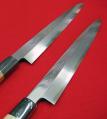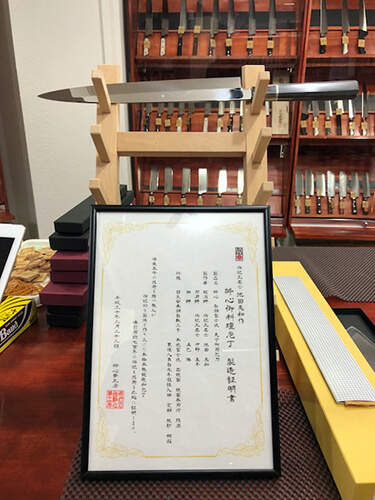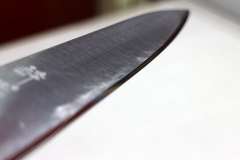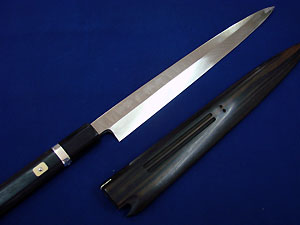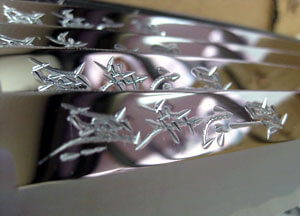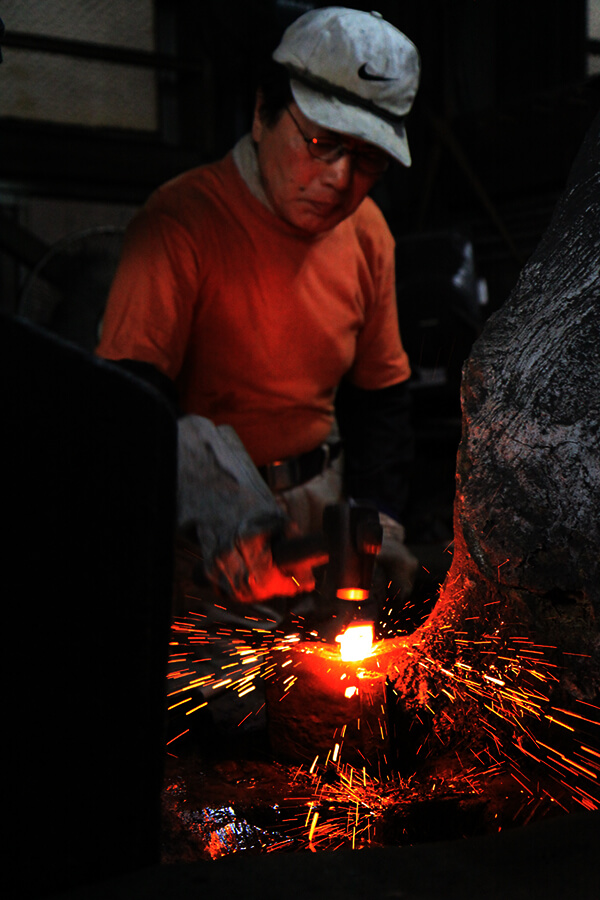Recovery from Hamaguri blade
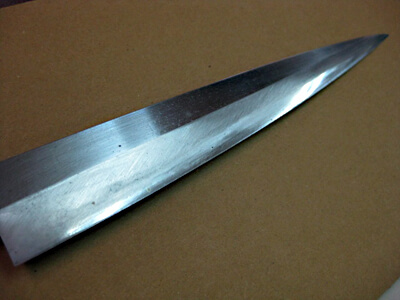
When using a Yanagi-ba knife and similar tools extensively, it’s common to face challenges with sharpening. The time for sharpening becomes scarce, and the hassle of maintaining the sharpening stone is daunting. As a result, the blade edge tends to resemble a Hamaguri blade, much like a fisherman’s knife.
With the blade turning into a Hamaguri shape, the cutting efficiency and smoothness typical of a Yanagi-ba blade are lost. When you attempt to correct this by sharpening with a coarse whetstone, it’s not easy to revert to the original state. It demands significant sharpening time and frequent maintenance of the whetstone, making progress difficult. Fatigue may set in, and you might conclude the sharpening without fully removing the Hamaguri shape or get stuck in a frustrating loop despite your best efforts.
For those determined to restore their knife themselves, dealing with the Hamaguri blade can be a challenge. A quick and efficient solution is to seek assistance from a professional sharpener equipped with the necessary tools. They can expertly grind away the Hamaguri blade using a large whetstone, but caution is advised not to overdo it.
However, many enthusiasts prefer to tackle the sharpening themselves and restore their knives. For them, I’ll outline a method to efficiently recover from a Hamaguri blade and get back to the original sharpness.
When your knife’s edge ends up resembling a Hamaguri blade (or rounded edge), getting it back to its original structure can be quite challenging with a single sharpening.
“For those determined and patient souls with the focus to sharpen until perfection, the story might be different.”
There are various methods, and today I’ll introduce one of them. When the blade edge has turned into a rounded shape, ignore the blade edge itself and focus on standing up the Shinogi line firmly.
Ignore the blade edge completely and grind the Shinogi side even if it doesn’t touch the whetstone. Maintain a knife angle of 45° relative to the whetstone. By doing so, the Shinogi side will be ground more effectively, creating a groove between the blade edge and the Shinogi line.
Next, concentrate on grinding the bulge at the blade edge while maintaining the 45° angle. When the groove matches the bevel just before creating a convex edge, grind the entire surface of the blade edge. (Grinding until a convex edge forms is faster but shortens the life of the knife.)
Use a coarse whetstone to grind both the Shinogi side and the bulge at the blade edge until a rough flat surface is achieved, and the convex edge is felt. Then, on a medium whetstone, remove the coarse whetstone’s grinding marks and refine the edge.
The angle between the medium whetstone and the knife should be around 60°. From here, it’s up to your preference on how you further sharpen the blade.
In essence, rather than sharpening the blade edge in one go, I believe it’s easier to achieve a clean finish by breaking down the blade edge structure and working on it in segments. After experimenting with various methods that didn’t yield much effect, I find this approach effective.
Moreover, segmenting allows you to concentrate the grinding force on specific parts, making the changes in the structure visible and giving a sense of progress toward completion.
One thing to note is that you can’t stop midway with this method. Implement it when you have the time for sharpening. Also, be cautious not to grind too much near the Shinogi line; excessive grinding can result in a noticeable depression, akin to a convex bevel. It might reduce resistance in a way, almost like a convex edge!
This method works for Kasumi knives and Hontan knives, but for Kasumi knives, the process is quicker near the Shinogi line because it’s made of soft iron. You’ll need some considerable time for Hontan knives, so it might be better to have a professional sharpener maintain them.
Words alone might not convey this process effectively, but if you’ve managed to grasp it from this explanation, give it a try. “Videos would probably be better, right?
- 2013-01-22
